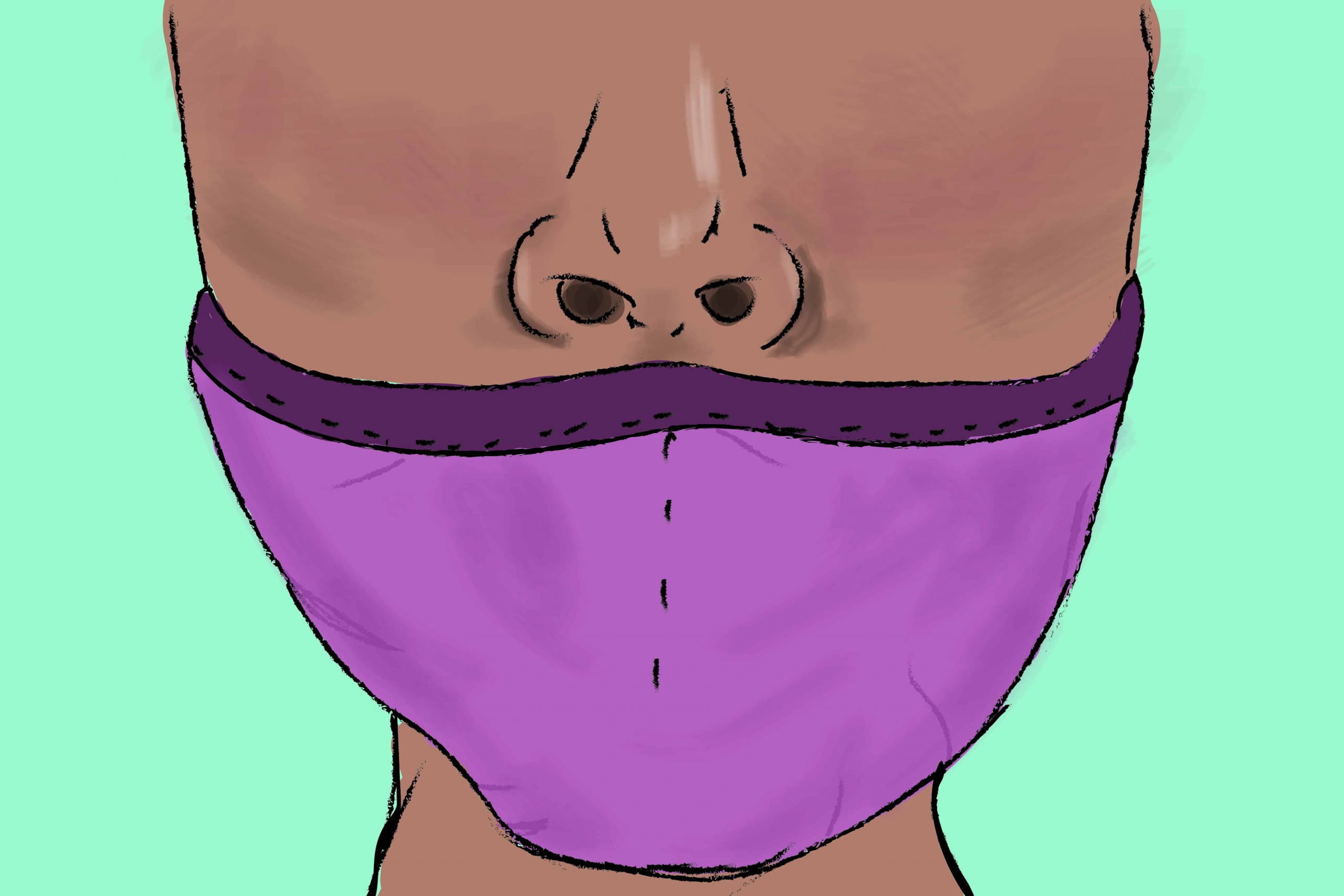While most school activities this year are taking place online, many students will, nonetheless, eventually have to go outside at some point. We may not be in classrooms much anymore, but we will still be coming into contact with people who are outside our social bubbles on at least a semi-regular basis.
Anyone who has ventured out beyond their Zoom sessions during this pandemic will have noticed a curious phenomenon: the below-the-nose mask wearer.
Given the steep rise in cases among young people in Toronto and elsewhere, and the recent news of two positive COVID-19 cases at the UTM Student Centre, perhaps it’s time for students at U of T to give the issue of masks some more thought.
While it’s relatively easy to understand the motivations of the total mask refuser — at best, some kind of ill-conceived sense of rebellion or personal independence and at worst, a conspiracy-fueled denial of the reality of the virus — the case of the partial mask seems at first glance a good deal more opaque, and more interesting. What drives these individuals to don the mask and then stop halfway, mere inches from their nostrils?
From the outset, we can distinguish between four rough categories of these nose rebels.
Firstly, we should remember that some people have important reasons — whether medical or otherwise — that make them unable to wear the mask over their nose. This is not the category of people who concern us here.
Secondly, we must be charitable and admit that some individuals do take the pandemic seriously and are just unaware that proper mask wearing involves covering the nose. Again, this set of individuals are not of interest in this moment, although one might like to recommend that they revisit their mask-wearing policy.
Another group of individuals are those who, sharing some affinity with the anti-maskers, reject the reality of the virus but are unwilling to completely flout the law, and instead sneak their way around it by refusing to wear their mask properly.
Finally — and this is the group of most interest — there are those who accept the danger of COVID-19, but who wear their mask under their nose as a show of rebellion against the law.
Can we discern the motivations of that final group? The answer might lie in a rather unlikely source: a joke about the existentialist philosopher Jean-Paul Sartre. One version of this joke goes like this.
The French existentialist Jean-Paul Sartre is sitting in a café when a waitress approaches him. “Can I get you something to drink, Monsieur Sartre?”
Sartre replies, “Yes, I’d like a cup of coffee with sugar, but no cream.”
Nodding in agreement, the waitress walks off to fill the order and Sartre returns to working. A few minutes later, the waitress returns and says, “I’m sorry, Monsieur Sartre, we are all out of cream — how about with no milk?”
Hilarious, I know. But what relevance does this joke have to our nose-free maskers? Perhaps we can allow ourselves to rephrase it as follows.
A rebel without a cause is sitting in a café when a server approaches them: “Can I get you something to drink?”
X replies, “Yes, I’d like a cup of law with non-compliance, but no danger.”
Nodding in agreement, the server walks off to fill the order and X returns to grumbling. A few minutes later, the server returns and says, “I’m sorry, we are all out of no danger — how about with no resistance?”
Alright, so joke writing is not my strong suit, but we can work with this anyway.
The point is that the obligation to wear a mask has two dimensions: it is both an act of following the law and a public health directive. By refusing to wear the mask over the nose, these individuals defeat the point of the medical aspect — in fact, new research shows that the nose might actually be better at spreading COVID-19 than breathing from the mouth.
Why wear a mask at all then, if they are going to leave their nose uncovered, one might wonder. The answer lies in a particular relationship to the law.
As the joke suggests, these people want to disobey the law without really putting themselves in danger of getting in trouble. What they accomplish, however, is a form of disobedience emptied of any real resistance.
This is not to suggest that total anti-mask advocates are engaged in a form of legitimate resistance, only to say that leaving the mask off entirely still takes the form of actual — selfish, in this case — refusal of the law’s jurisdiction over the individual.
The half-mask, however, breaks the letter of the law — the obligation to wear the mask properly — but, by wearing a mask at all, it does not question the force of the law, the idea that the law holds some kind of power over them.
By half-following the law, all these bare noses do is place themselves and others at risk while making absolutely no comment on the legitimacy of state intervention into our daily lives. The nose-out mask, then, is a completely pointless form of protest: do us all a favour and put your snout back in its place.
Ari Finnsson is a graduate student in the Department of History.


